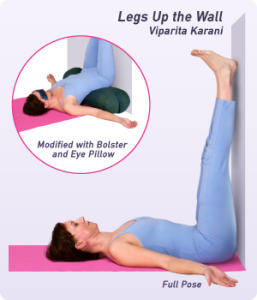
Sage Patanjali described the Eight Limbs of Yoga. Each of these can help you feel more spiritual and healthy. There are eight types of yoga: Yamas (Niyamas), Pranayama (Dhyana), Samadhi (Samadhi), and Pranayama (Pranayama). Asana refers specifically to the physical positions. These exercises cleanse the body and mind. Pranayama is the practice of breathing to purify the chakras.
Concentration and meditation are both forms of dhyana. While concentration and dhyana may seem similar, they are not the same. Meditation is a different kind of meditation. Concentration requires one-pointed awareness, while meditation requires heightened awareness without focus. For dhyana to be successful, one must first develop strength, stamina, and patience. However, once the practitioner has attained this state, dhyana will bring the practitioner to a more spiritual level.

Asana, or the practice of concentrating, is a physical form of meditation. The second branch, called dhyana (deep meditation) involves active concentration. Dhyana requires a calm mind. This can be difficult for beginners. Samadhi, which is the culmination all eight limbs of yoga, can be described as the experience and connection with a higher power.
You can improve your yoga practice by serving others in selfless service. It involves serving without expectation. This can be done to animals, people, and the entire world. This is a powerful and effective way to transform one’s life and reach spiritual liberation. As a result, selfless service is an important part of yoga for everyone. If you're serious about yoga, it will help to achieve a deeper feeling of peace.
Dhyana is the eighth branch of yoga. Dhyana is the first branch. The second branch is samadhi, or surrender. Pratyahara is the fifth branch. All eight branches of yoga have a common root and are all beneficial. All levels of experience are welcome to practice the eight branches. You don't need to use any external tools to dedicate yourself to your practice.

The eight branches of yoga can be combined or performed separately. Some branches can overlap, while others may be specific to a certain body part. As they all have different benefits, many people can practice multiple branches of yoga. The eight branches of yoga can help you find your own way to Yoga. They all share a common goal, enlightenment. There are many types of yoga that can help you achieve greater awareness.
Ashtanga is a form or classical yoga that is based on Patanjali's classification. There are eight yoga branches: Hatha, Karma Raja Kriya and Kundalini. Each branch of yoga is designed for a specific type of practitioner. Karma, for instance, is based on service. Bhakti, however, focuses on love and devotion. Jnana is a branch of Hatha and focuses on knowledge.
FAQ
Can I drink alcohol while exercising?
Yes. Alcohol can increase energy expenditure, speed recovery time, and reduce soreness.
It also increases insulin sensitivity. This makes it easier and faster to absorb glucose.
Alcohol can also cause dehydration which can lead to a slower metabolism. Alcohol can also lower testosterone production, which could lead to a decrease in muscle-building potential.
This is why women shouldn't have alcoholic drinks before exercising. Women who drink heavily should wait at LEAST 24 hours before they start working out.
Nursing mothers should abstain from alcohol as much as they can.
Men should drink only one glass of alcohol per day.
Are Cardio exercises good or bad for your health?
Cardiovascular exercise is a great way to improve your cardiovascular health. It improves blood circulation, strengthens heart muscle, gives you energy, and can even help you lose weight.
Cardiovascular exercise includes running, biking, hiking, swimming, tennis, basketball, soccer, volleyball, football, etc.
It is important to keep in mind that cardio exercises should not only be performed at a high level of intensity, but also at low levels. This could cause injury.
If you feel fine, only do the cardiovascular exercise.
Do not push yourself to the limit. This could lead to injury.
Warm up is the best way to start cardiovascular exercise. Next, increase your intensity gradually.
Always listen to your body. If you feel pain during cardiovascular exercise, stop immediately.
It is also advisable to rest after a cardiovascular workout. This gives your muscles the chance to heal.
To lose weight, you should include cardiovascular exercise in your daily routine.
It is the most efficient way to lose weight and stomach fat.
What diet supplement is best to lose weight?
Weight loss requires diet and exercise. Some people find certain supplements helpful.
Studies have shown that omega-3 fatty acid may be beneficial in weight loss. Omega-3 fatty acids are essential fats that are vital for brain function, cell membrane integrity, and other functions. They're found in seafood like salmon, tuna, shrimp, and cod liver oil.
Research suggests that green tea may be beneficial in weight loss. The antioxidants in green tea, catechins and other compounds may increase metabolism and promote weight loss.
Is weightlifting more effective at burning fat?
Weight lifting does burn fat faster, but only if you combine it with cardio workouts.
For the best results of weightlifting, do it after cardio exercises.
If done correctly weightlifting can raise your heart rate, oxygen consumption and help you lose weight.
It is important to combine cardio with it, as you will not see significant changes in your body's composition.
Statistics
- Are You One of the 20% of Guys (mh.co.za)
- Cardmembers earn 5% Back at Amazon.com with a Prime Credit Card. (amazon.com)
- An estimated calorie range for moderately active adult males falls between 2,200 to 2,800 calories per day, depending on age. (eatright.org)
- Candidates and applicants must pass all four tests at 70% (minimum level) to graduate from Basic Deputy U.S. Marshal (BDUSM) Training. (usmarshals.gov)
- According to the American Academy of Dermatology (AAD), men over 50 are at a heightened risk of developing it. (healthline.com)
External Links
How To
What nutrients do men need each day?
For healthy growth and development, men need to eat a balanced diet. The body requires vitamins and minerals, protein, carbohydrates, fats (fats), water, fiber, as well other essential elements.
Specific nutrients are also required by the male body at different times during the day. You can see that your body uses energy to make hormones. You use protein to build muscles and repair damaged tissue when you wake up.
Your body uses the night to break down fat and store extra energy as glucose. Your body has less energy but still requires enough nutrients during this time. If you feel hungry, you can have a snack in the evening.
For your body to function properly, it needs adequate amounts of protein and carbs. You may feel sore muscles if you exercise hard.
To avoid this, you need to eat carbs and proteins within two hours of training. Your body will break down stored glycogen to provide glucose for energy.
In addition, you must consume protein immediately after completing your workouts. This prevents muscle tissue loss that happens while you sleep.
Lactic acid is produced by the body during periods of intense exercise. It is a form of lactic acid that builds up in the bloodstream. This causes fatigue. You can avoid this by eating carbohydrates-rich foods like fruits and veggies.
Carbohydrates provide energy for your body to recover after strenuous exercise.
Your diet may include lean meats like fish, eggs, milk cheese, yogurt or beans as well as lean proteins such as fish, eggs, egg yolks, cheese, yogurt, bean, peanuts and seeds.
All these foods are high-quality sources of protein. Protein promotes muscle growth and repairs damaged tissues. Protein also supplies the amino acids your body requires to make sex hormones, such as testosterone.
For healthy skin, hair and joints, it is important to eat enough fats. Healthy men need to consume between 20%-35% of their total calories from fat.
Fat is good for your heart and helps you fight cancer. Your brain also functions properly thanks to fat.
Most of the fat you need can be obtained from vegetable oils, including sunflower oil (or soybean oil), peanut oil, peanut oil, soybean oil, and peanut oil.
These oils are high in monounsaturated fatty acids (MUFAs). MUFAs reduce cholesterol and inflammation. They protect your cells and prevent damage from free radicals.
Saturated oils (SFAs), found primarily in animal products such meats, dairy products and butter, are known to raise LDL ("bad") cholesterol. SFAs increase LDL ("bad") cholesterol, and increase triglycerides. They are also good for weight loss and belly fat.
Polyunsaturated fats (PUFAs) are found in plant-based sources like vegetable oils, nuts, seeds, and grains. PUFAs help improve cardiovascular function, and lower inflammation. They help to control blood sugars and cholesterol.
Low HDL ("good") cholesterol can lead to erectile problems in men. Saturated fats are a major source of bad cholesterol. This lowers good cholesterol.
Men who eat lots of red meat or pork can develop prostate problems. This is because these foods contain high amounts of nitrates. If cooked at high temperatures, the nitrates become nitrosamines. These compounds can cause cancer.
Most processed meats contain nitrites or other harmful chemicals. Avoid them.
The American Heart Association recommends limiting red meat intake to two meals per week. Instead, choose poultry and fish, legumes, tofu or whole grain bread as your main source of protein.